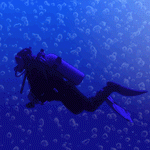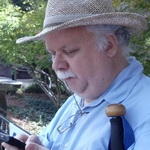KatieW wrote:... Can you tell, by looking at your graphs, if this might be the case? ...
Katie and Nord, I will jump in at this point to make an couple observations.
First, I *really* appreciate the work you are doing. I truly wish my VPAP Adapt SV unit provided this level of granularity. I may upgrade my ResScan software to see if the software enables better granularity of data. However, I suspect the advance of technology is what allows this level of granularity in the data.
Second, while the graphs might show soemthing such as mixed (or as it is now called Complex Sleep Apnea), you need to remember that the information provided by the S9 is only indicative of the condition. To use an analogy. Think of this as a windsock that indicates the wind direction and strength. IF the central apneas are severe enough to need to be addressed with some xPAP therapy, the full sleep study is needed to confirm the data and titrate to the proper pressures.
Here's an article that describes how Central Sleep Apnea can result from the application of CPAP therapy:
Central Sleep Apnea on Commencement of Continuous Positive Airway Pressure in Patients With a Primary Diagnosis of Obstructive Sleep Apnea-Hypopnea
http://www.ncbi.nlm.nih.gov/pmc/article ... .5.462.pdf
It concludes:
A significant minority of patients with a primary diagnosis of OSAH have either emergence or persistence of CSA on CPAP. Risk factors include male sex, history of cardiac disease, and CSA on baseline PSG.
With this stance, I am not just sticking up for the medical community on this. This is more an issue of accuracy of the data. Though the S9 provides an amazing leap forward in the data collected, it does NOT collect informaion about the sleep state. It does not have the years of data behind it to show the accuracy of the measurements it provides. In otherwords, while it acts as a pretty darn good windsock, it is just that.
Some questions that might need to be answered include:
- Are the apneas positional?
- Do the apneas occur during REM or NREM state?
- What is the O2 desaturation during these apneas?
- How does pressure increase impact the central apneas?
And so on. Those are some of the questions any doctor would want to know before embarking on BiPAP S/T or an ASV unit to address the ComplexSA.
Oh, and don't get me wrong. You can land a plane with just a wind sock. But with somethng as difficult to manage as central sleep apnea, it is VERY important to have very accurate results.
















